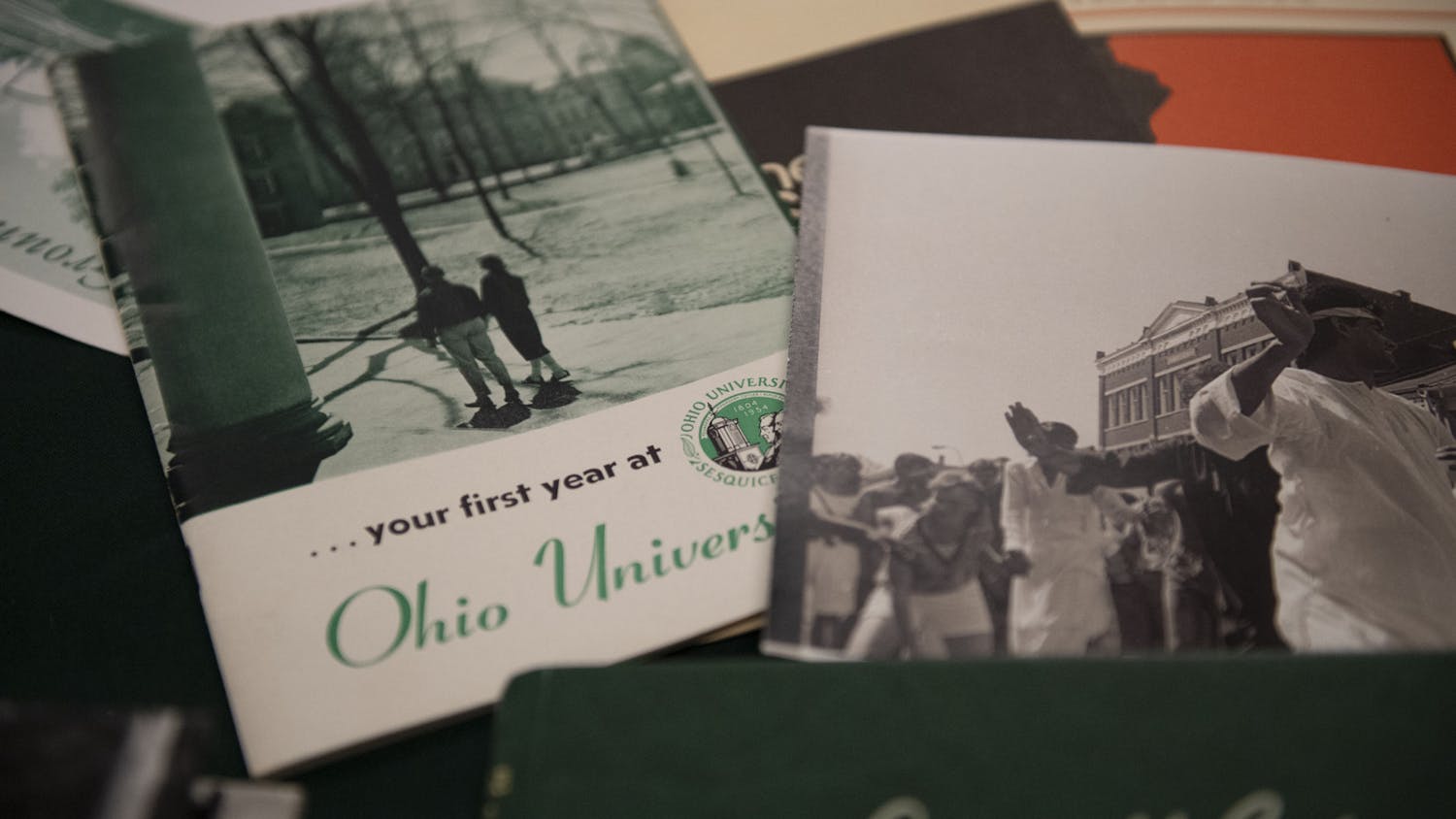Construction on North Court Street has paved the way for temporary changes in the city’s pedestrian and traffic pathways, but the building blocks of the city’s streets will remain the same for years to come.
Despite high costs and labor-intensive construction involved with reconstructing the street’s brick pavement, the city is set on returning to the bricks.
“(The brick roads) show our different heritage and our different culture,” said Marjorie Stone, historian and co-author of Getting to Know Athens County. “They just give off more of an atmosphere than an old, black strip could.”
However, the bricks don’t come without a price tag.
Brick streets are five to 10 times more expensive to install due to the large amount of labor involved — every brick must be individually handled several times, and each weighs eight to 10 pounds, Director of Athens Engineering and Public Works Andy Stone said in an email.
The bricklaying for the North Court Street project will cost an estimated $54,000 — about 12 percent of the project’s budget, Stone said.
The cost of using bricks to preserve the city’s history has been debated in the past, said Bill Bias, former Athens City Council president and Democratic candidate for Athens County Treasurer.
In 1990, City Council passed a resolution establishing a Brick Streets District. According to the resolution, the streets and alleys of uptown Athens stretching from Park Place to the end of North Court Street must remain brick, even if they are to be repaired or replaced.
The resolution was created to prevent a section of College Street from being repaved with asphalt, Bias said. The brick paving ended up costing the city $60,000 more than if asphalt had been used.
“We argued vehemently over three ordinances,” Bias said. “One member of council wanted to get rid of the brick street entirely. In a 4-3 decision, we set up a historic section of town.”
Like Bias, Marjorie Stone said she was happy to see the resolution pass, adding that the bricks contribute to the beauty, quality and richness of Athens.
“The attitude of the people is that saving money is the most important thing in the world,” Marjorie Stone said. “I wanted all the damn bricks saved. I like the attitude, the impression the brick street gives.”
Even if brick streets are not in the Brick Streets District, the city works to maintain the blocks, unless there is a compelling safety or maintenance reason to do otherwise, Andy Stone said.
“I believe there will always be brick streets in Athens,” he wrote in an email. “We just have to focus our maintenance efforts on those we have left.”
Andy Stone said that although brick streets tend to be more expensive to install, they last longer and wear better than asphalt or cement.
Even though there are disadvantages to the brick streets, Councilwoman Chris Knisely, D-At Large, said she hopes the city will maintain them for years to come.
“I think Athens is like a number of other communities that have realized the importance of maintaining historic detail,” Knisely said. “It improves the quality of life in the town. People would be attracted to that kind of community. There’s a cultural and economic impact for maintaining historic areas.”
The cost of using bricks to preserve the city’s history has been debated in the past, said Bill Bias, former Athens City Council president and Democratic candidate for Athens County Treasurer.
In 1990, City Council passed a resolution establishing a Brick Streets District.
According to the resolution, the streets and alleys of uptown Athens stretching from Park Place to the end of North Court Street must remain brick, even if they are to be repaired or replaced.
The resolution was created to prevent a section of College Street from being repaved with asphalt, Bias said.
The brick paving ended up costing the city $60,000 more than if asphalt had been used. “We argued vehemently over three ordinances,” Bias said. “One member of council wanted to get rid of the brick street entirely. In a 4-3 decision, we set up a historic section of town.”
kg278810@ohiou.edu






